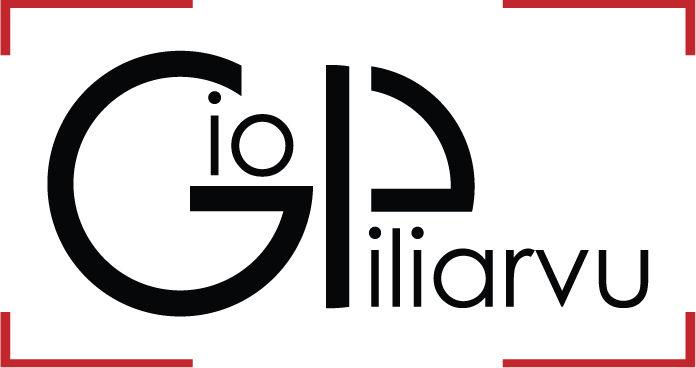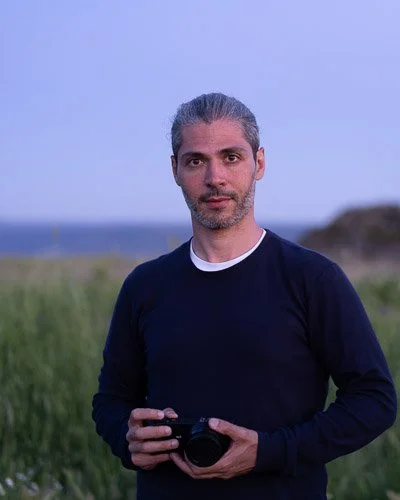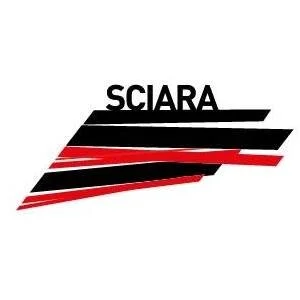Giovanni Piliarvu
ジョバンニ・ピリアルヴ
My approach to photography is intuitive, but not improvised. Over time I have developed a body of research that grows out of observing the world around me: I follow the themes that strike me and capture my interest, turning them into paths of exploration.
For me, photography is both expression and reflection, part of an inquiry into the medium itself and its communicative possibilities. I am particularly interested in exploring the relationships between images, and the way meaning expands through their interaction. I love to witness the narrative that unfolds frame after frame.
This journey began in childhood, when I first loaded a roll of film into my mother’s Minolta, guided by the stories of my uncle, who owned a camera store in Sardinia. Later, I studied Japanese Literature at the University of Florence, where I spent years immersed in a Renaissance atmosphere while dreaming of Tokyo. These experiences continue to shape my perspective and inspire the way I approach both landscape and street photography, the two main fields through which I weave personal experience into a broader vision of the time and space we inhabit.
I am the co-author of the book Tokyo Conversations (2022), the photographer for Catland (2020), and the primary photographer for the volumes Sardegna (2020) from the Niche series and Italian (2021-22) in the NHK Radio Texts series. I currently appear on the NHK TV program "しあわせ気分のイタリア語," where I present photography segments (2022-present). I also publish regular articles in LINUS .
EXHIBITIONS
2025/10 - 気配 - Presenza
2025/03 - Memories of Light - 光の記憶-
2024/10 - INTERMEZZO-世界が静まる時-
2024/04 - 消えゆく日本の守護者-ライカと共に過ごした時間-
2024/03 - Island Gallery - Spring Selection
2023/08 - Niche07 - Tokushima- 阿波おどり写真展~10人の写真家が見る阿波おどりの世界~
2023/03 - Niche07 - Fukuoka- Viaggio alla scoperta della Sardegna
2022/12 - 特別な故郷
2022/12 - Niche07 - Tokyo- Viaggio alla scoperta della Sardegna
2022/08 - Grand Tour - destinazione Italia
2022/04 - Acqua 水
2021/10 - サルデーニャの建築と文化展
2019/06 - Vette 頂
2018/06 - Fluire~時の流れ
2017/06 - Isole
2016/06 - Luce d`italia
2015/08 - Google+三人写真展 2015 / Three Photographers Emerge 2015
INTERNATIONAL PHOTOGRAPHY AWARDS
IPA 2019 Sopra le Nuvole - Nature Landscapes Honorable Mention
IPA 2019 Caleidoscopio - Nature Landscapes Honorable Mention
IPA 2018 Fluttuando - Nature Landscapes Honorable Mention
IPA 2017 Dancing Butterflies -Event Tradition and Culture Honorable Mention
IPA 2015 Iconic Hokuriku - Nature Landscapes Honorable Mention
IPA 2014 Trail in Tanada - Nature Landscapes Subcategory Winner 3rd Place
IPA 2014 Trail in Tanada - Nature Landscapes Honorable Mention
ARTIST STATEMENT
Above all, I am a landscape photographer. Yet, I understand "landscape" broadly, referring to emotional and perceptual impact. If we free ourselves from the trap of opposing two big abstract concepts, like "nature" and "culture," we realize that a portrait is also a landscape and that cities and traditions are landscapes too. Photography is the medium I have chosen to explore that relationship.
From the photo I initially shot to the one that finally gets printed and materializes, there is a slow and gradual process. The first experience, shooting, is bodily grounded: I am immersed in a situation that, all of a sudden, and with a simple finger movement, I frame and cut out from what is happening around me. This exercise is usually emotionally driven and requires some form of a present-at-the-moment mental state. However, the photo still needs to be finished.
Editing is the next step and, in contrast to shooting, is a very intentional mental state. Usually, the raw image is somehow different from the image I imagined when shooting. So, I edit and re-edit it until I get closer to the image I initially imagined. Indeed, by editing, I intentionally bring the raw material as close as possible to the picture I imagined when shooting. The complete process goes from imagination to memory, back and forward many times. If shooting is emotionally driven, the editing is entirely intentional. In the beginning, the process is very much here-and-now, the editing, on the other hand, is mainly there-and-then. The image that finally gets printed is the result of these endless associations between memory and imagination.








